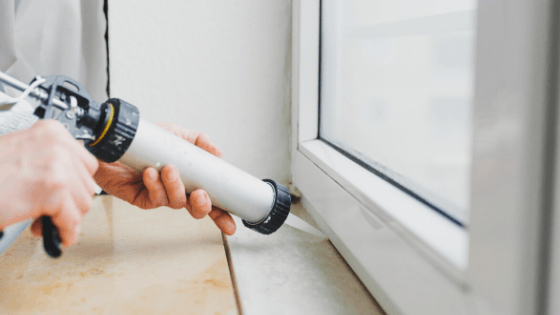With winter looming, drafty windows can be a big problem. Keep your home warm and free of drafts through the cold months of the year with a few of these tips.
Weather-Stripping
Weather-stripping covers all of the cracks in windows and windowsills. This will keep outside temperatures outside and inside temperatures inside. Sealing the sides or the top and bottom of the window can make a big difference. Weather-stripping creates a tighter seal for your window, effectively blocking out drafts. What is needed for this inexpensive option can be purchased at most hardware stores.
To apply weather stripping, start by cleaning out the window frame. Use a damp rag to wipe down the windowsill and frame. After it’s dry, you’re ready to apply weather-stripping. Weather-stripping can be made of many things—the most common is foam. Foam is a good, affordable option, but it typically only lasts one to two years—not as long as other options. Vinyl and silicone tend to last three-plus years. Apply strip inside the window frame on the sides of windows or the top and bottom of the window.
Window Treatments
A window treatment can make all the difference—and unlike weather-stripping, window treatments can be easily removed. If you want to keep outside temperatures outside, window treatments can be useful. Window treatments provide insulation, keeping drafts out, and keeping warmth in. If you don’t want to invest in new window treatments, try using a draft snake—a small tube of fabric filled with rice or beans. Place it in the bottom of the frame of the window. On the bottom of the windowsill, the draft snake will keep out drafts.
Apply Window Caulking
Applying caulk around the window between the trim and frame can effectively keep drafts out. Clean the window thoroughly, clear away any dust, or old paint or caulk. Fill all the gaps with caulk.
Caulk is more challenging to remove from windows—though not impossible. This insulation option is usually best for basement and attic windows.
Rigid Foam
Another easy option for basement and attic windows that are not being used—rigid foam. Glue a foam board to some thin drywall and cut it to fit the window. It should fit snug in the frame. Press inside the window frame up against the glass. This will keep your home well insulated.
Plastic Film
If you want to go with an insulation option that will allow you to see through your windows—plastic film is an excellent way to go. Apply these films to windowpanes with double-sided tape. It can be sealed with a hairdryer. If you don’t have access to a plastic film, try using bubble wrap. Place the bubble side up against the glass and like the plastic film, attach with double-sided tape.




